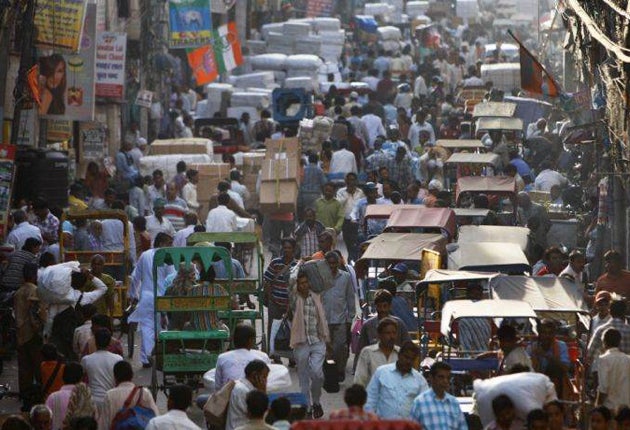1.2 billion and counting... India begins census
Officials fan out across the country for the world's largest population study

Your support helps us to tell the story
From reproductive rights to climate change to Big Tech, The Independent is on the ground when the story is developing. Whether it's investigating the financials of Elon Musk's pro-Trump PAC or producing our latest documentary, 'The A Word', which shines a light on the American women fighting for reproductive rights, we know how important it is to parse out the facts from the messaging.
At such a critical moment in US history, we need reporters on the ground. Your donation allows us to keep sending journalists to speak to both sides of the story.
The Independent is trusted by Americans across the entire political spectrum. And unlike many other quality news outlets, we choose not to lock Americans out of our reporting and analysis with paywalls. We believe quality journalism should be available to everyone, paid for by those who can afford it.
Your support makes all the difference.From the icy heights of the Himalayas to the palm-fringed beaches of Kerala, Indian officials yesterday began the world's largest census to record and detail the country's constantly growing population of more than 1.2 billion people.
In what has been termed the biggest administrative exercise ever undertaken, around 2.5 million officials began fanning out to undertake the count that is recorded every 10 years.
This year, however, the officials will also be collecting biometric data from everyone over the age of 15 as part of a process to provide all Indian citizens with identity cards which the government says will help people obtain vital services.
"Census 2011 is the largest exercise of its kind in human history. Our goal is to identify, count, record and issue identity cards to every Indian citizen," said the country's Home Minister, Palaniappan Chidambaram. "It is for the first time in human history that an attempt is being made to enumerate and record and eventually issue an identity card to 1.2 billion people," he added. Most of those carrying out the count in India's 630,000 villages and 5,000 cities are government workers, school teachers and other local officials who go from door-to-door gathering information on everything from the size of families to the marital status of the family members. For the first time they will also count bank-account holders and mobile-phone users. Officials in India point out that while China – the world's most populous country with 1.3 billion people – also tallies its population, that count is undertaken by a variety of organisations including Communist Party units, community leaders and the heads of factories, rather than by a single body.
With much of the Indian population living in rural areas, the data collected by the government is the main source of information for everyone from manufacturers of cars and marketers of toothpaste to government officials planning and implementing policies. "For a large country like ours, any detail that you can get on the population is always useful," Ajit Ranade, the chief economist at the Aditya Birla Group, told Reuters. "We just don't know enough."
While some efforts have been made to counter India's population growth rate, it is estimated that it will continue to increase until 2050, reaching 1.7 billion. At the time of India's independence from Britain in 1947, its population was just 350 million.
Officials say that, within this morass of humanity, it is often difficult to ensure that services designed to help the poor of the country are actually delivered. The government says that is one of the reasons behind the national identity scheme, launched last year, which plans to provide every Indian with a unique number and a card that contains their photograph and thumbprint.
It is estimated that the counters, who not only have to visit every structure in the country that can be classified as a dwelling, but also detail millions of homeless people who sleep on railway platforms and elsewhere, will not complete their task until next February. This will be the country's 15th census held without interruption at the turn of every decade. Census operations in India were started in 1872 by British colonial rulers.
The latest census began at the pink sandstone palace in Delhi that is occupied by the country's President, Pratibha Patil.
Growing nation in numbers
1.2bn Estimated population (world's second largest)
1.2m Area of India in square miles
2.5m Number of census workers collecting data
11 Number of months census is expected to take
60bn rupees (£880m) Predicted cost of census
467m India's estimated workforce
27 per cent Proportion of Indians thought to be living below the poverty line
Join our commenting forum
Join thought-provoking conversations, follow other Independent readers and see their replies
0Comments